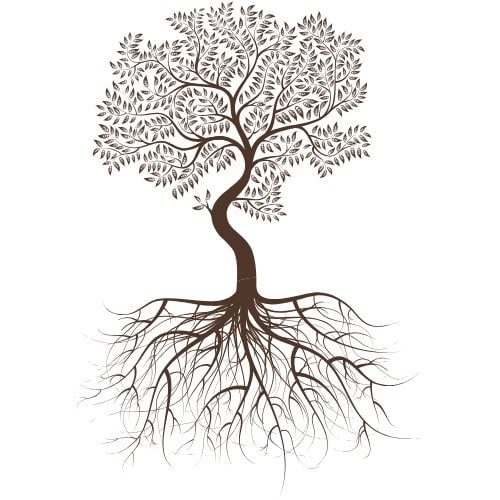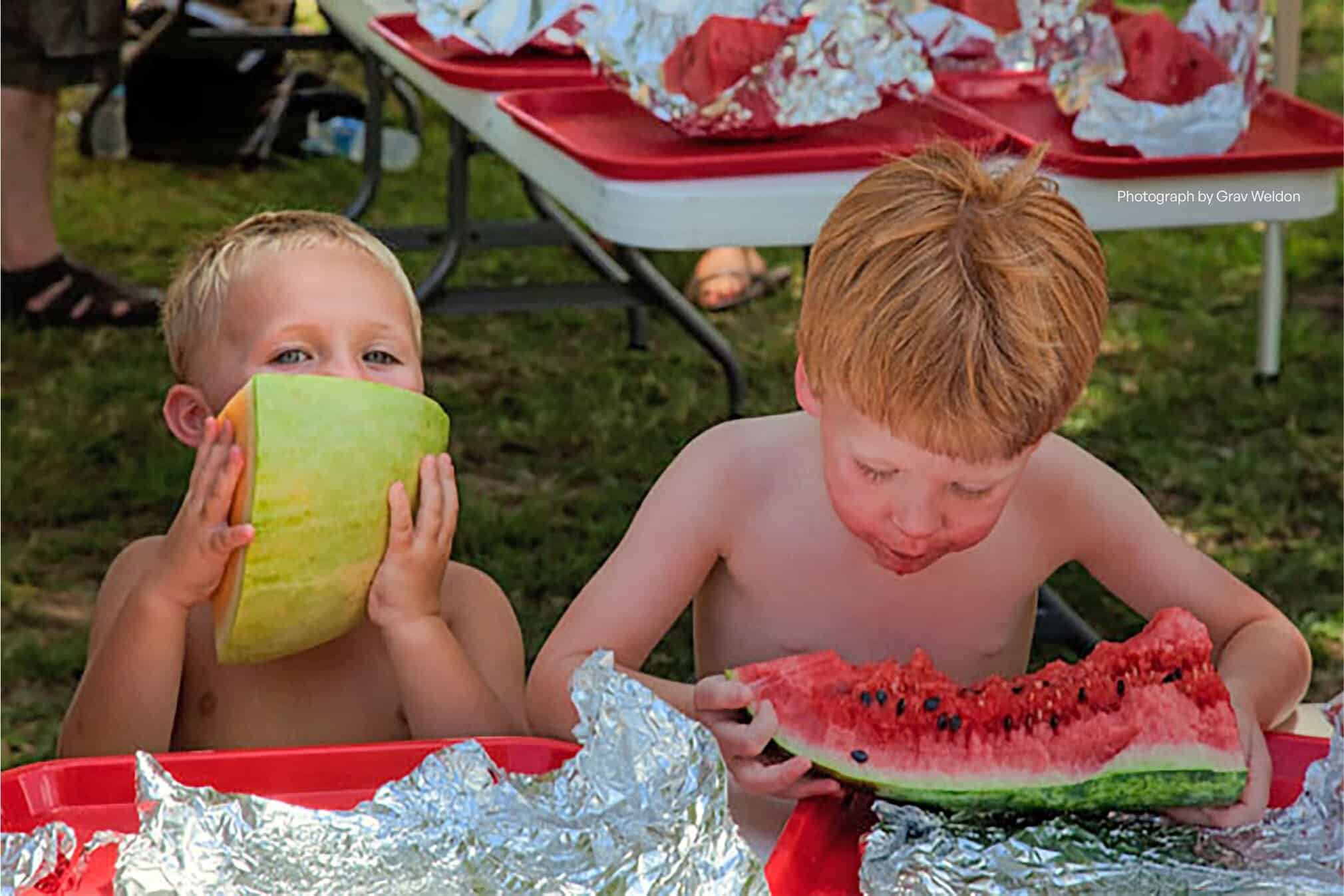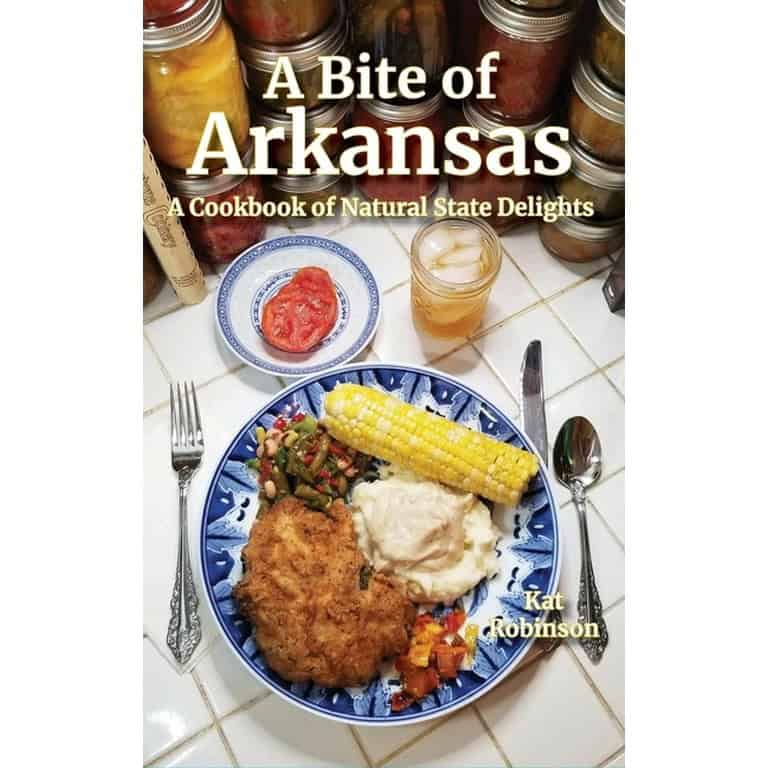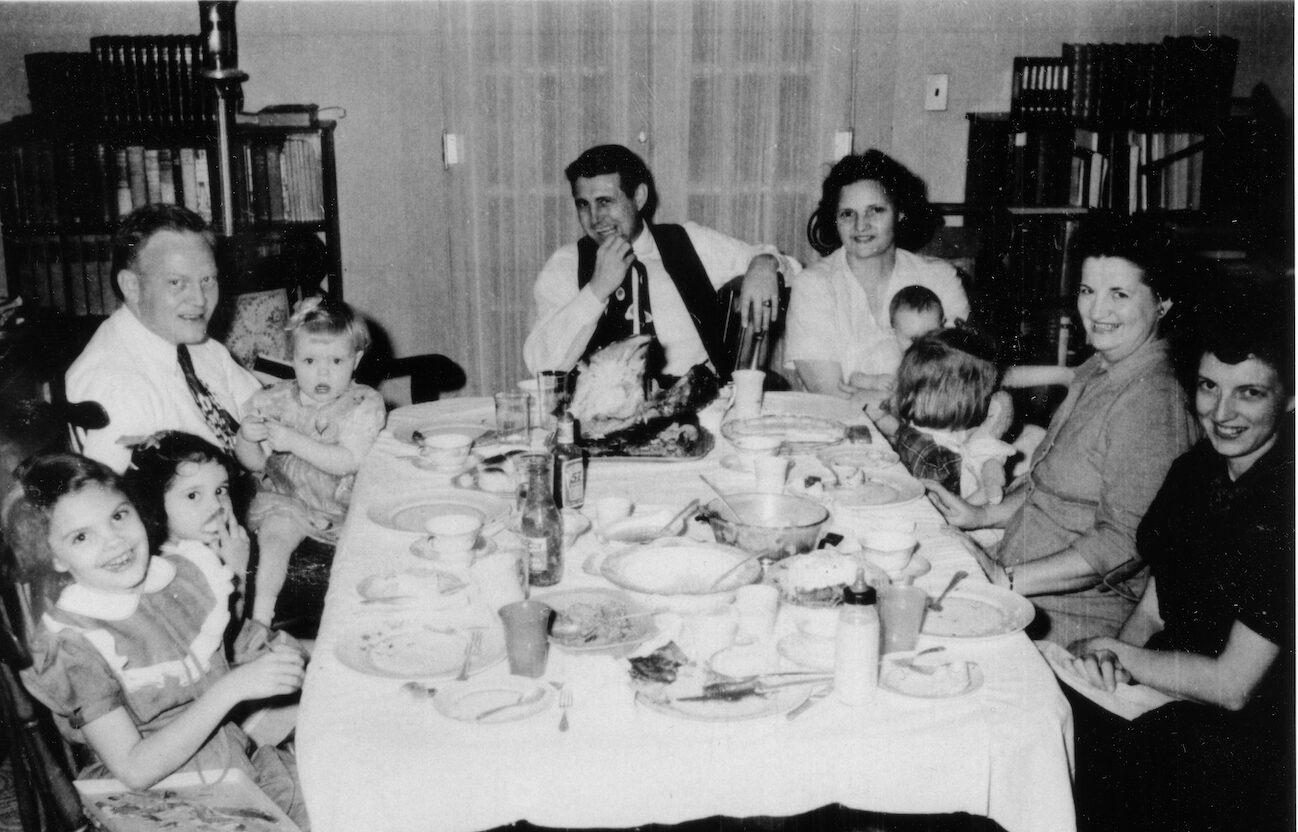Summers in Arkansas are hot and humid. The most quenching refreshment available? Our favorite harvest—Arkansas watermelons. Arkansas loves watermelons so much, it has not one, but two, festivals to celebrate this summer treat.
Photos and Words by Kat Robinson
Arkansas’ juiciest fruit is celebrated in so many ways. The oldest melon-related celebration is in Hope, the county seat of Hempstead County located in the southwestern part of the state. The sweetest melon fest is in Cave City, on the border of Independence and Sharp counties in the foothills of the Ozarks.
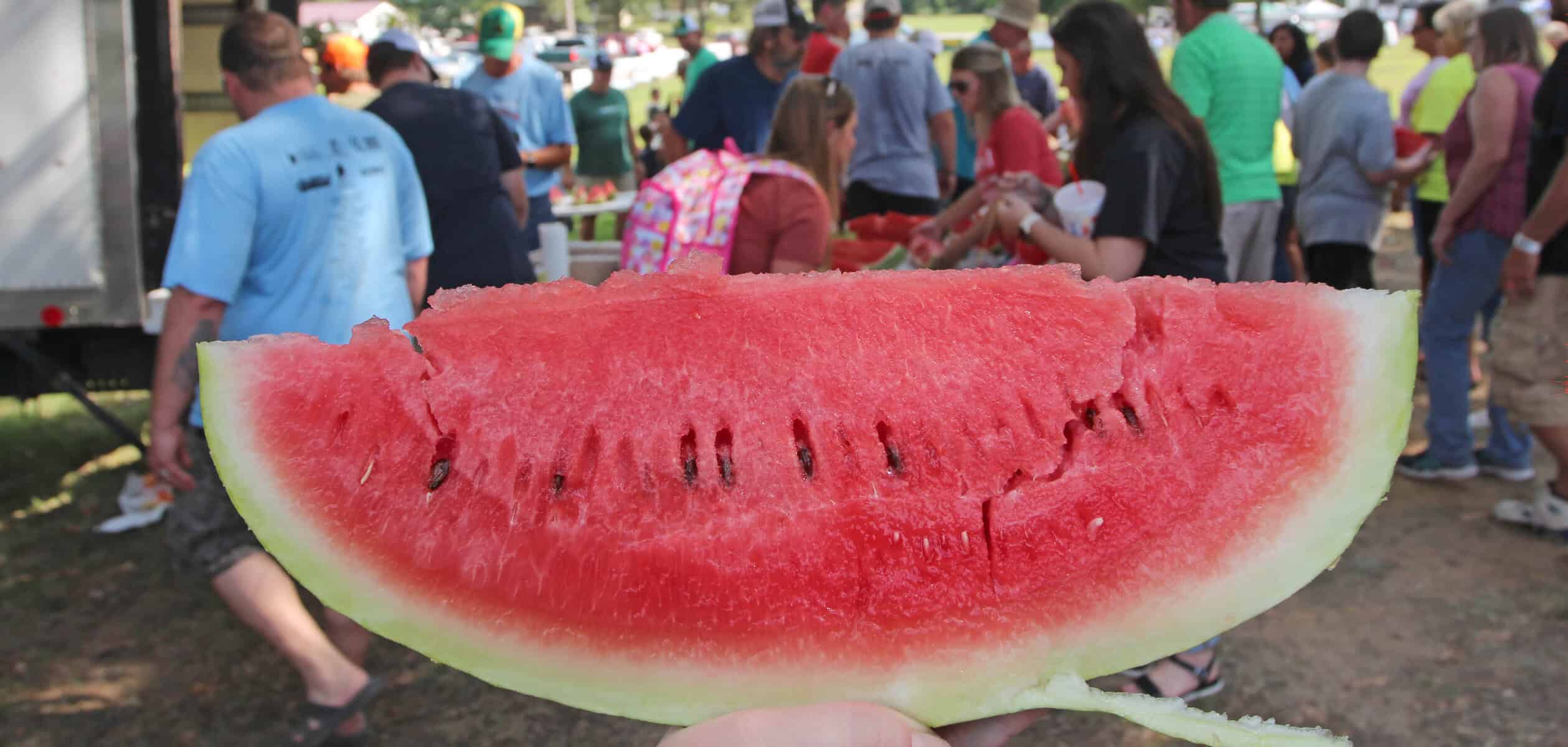
Watermelon 101
The average Arkansas watermelon weighs between 18 and 25 pounds. Melons harvested in summer are started from seed in May. The modern melons we know look quite different from their ancestor melons. Watermelons originated about 4,000 years ago in Africa. Over time, cultivation and selection left behind heavy rinds with pockets of fruit and created the sweet and delicious “meat”-packed centers of melons we enjoy today.
Watermelon color and flavor aren’t limited to the pinks and reds depicted across historic paintings, now melons are available in orange and yellow-meat options. Melon flavors, too, can differ greatly. Typically, variations in weather cause differences in flavor profiles. Low-rainfall years tend to turn out sweeter melons, though much of this is attributed to the care given by the farmer. Some melons, like the darker Black Diamond, are naturally sweeter and grow best in slightly acidic, sandy soil.
Watermelon season in Arkansas begins in late June, when farms in the southern part of the state pick their first to go to market. Homegrown melons are usually around until early September, when most fields are spent.
Hope, Home of the Heavyweights
Hope has long been known as an epicenter for large melons, sometimes even the largest in the world. While melons had been grown in the region for decades before, the efforts to grow them larger may have been best influenced starting in 1916, when John S. Gibson, a local retailer, started offering prizes for the largest vegetables produced in the area. The efforts were quickly realized with large watermelons being delivered to Gibson’s shop to be weighed. The festivities around them started not long after.
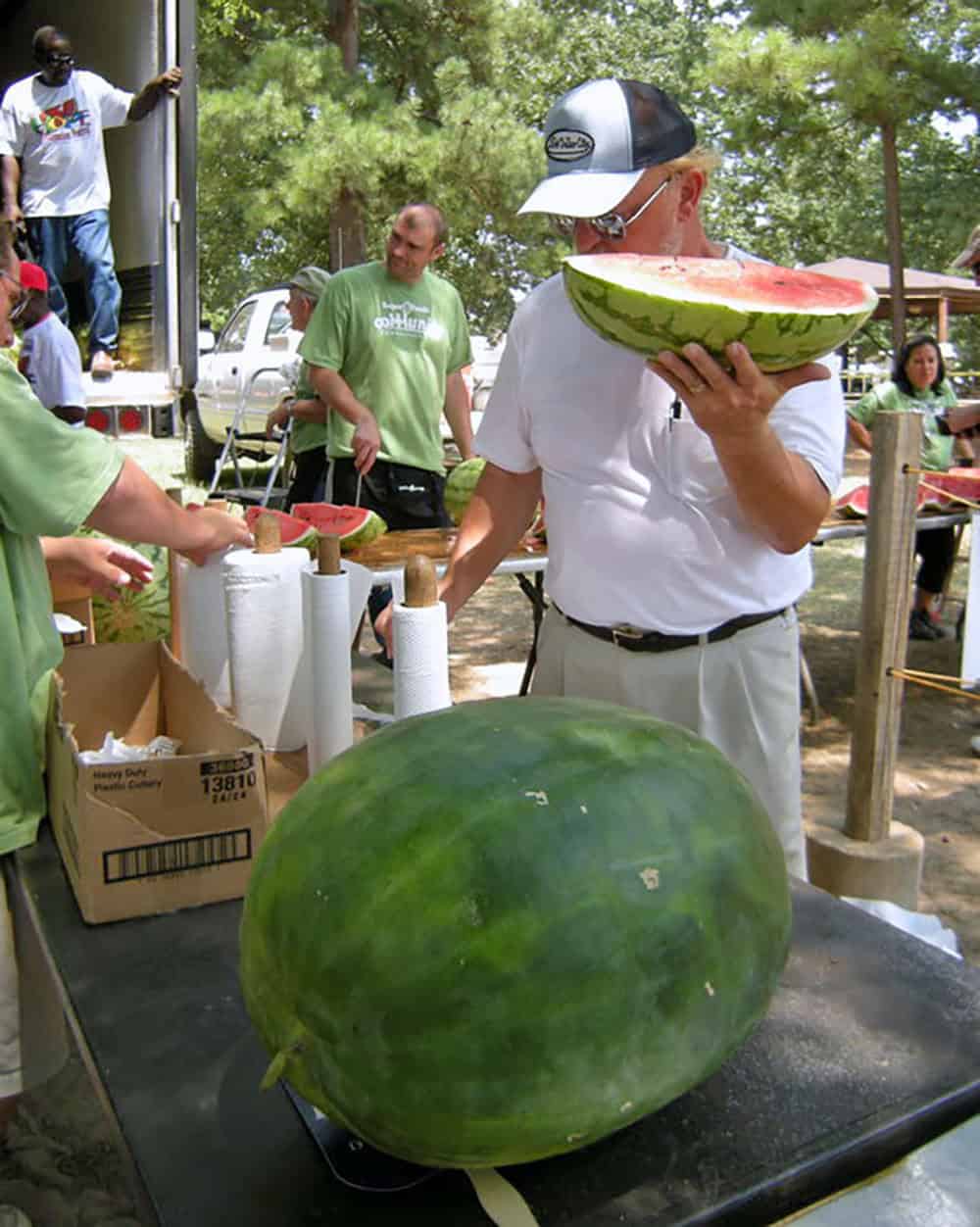
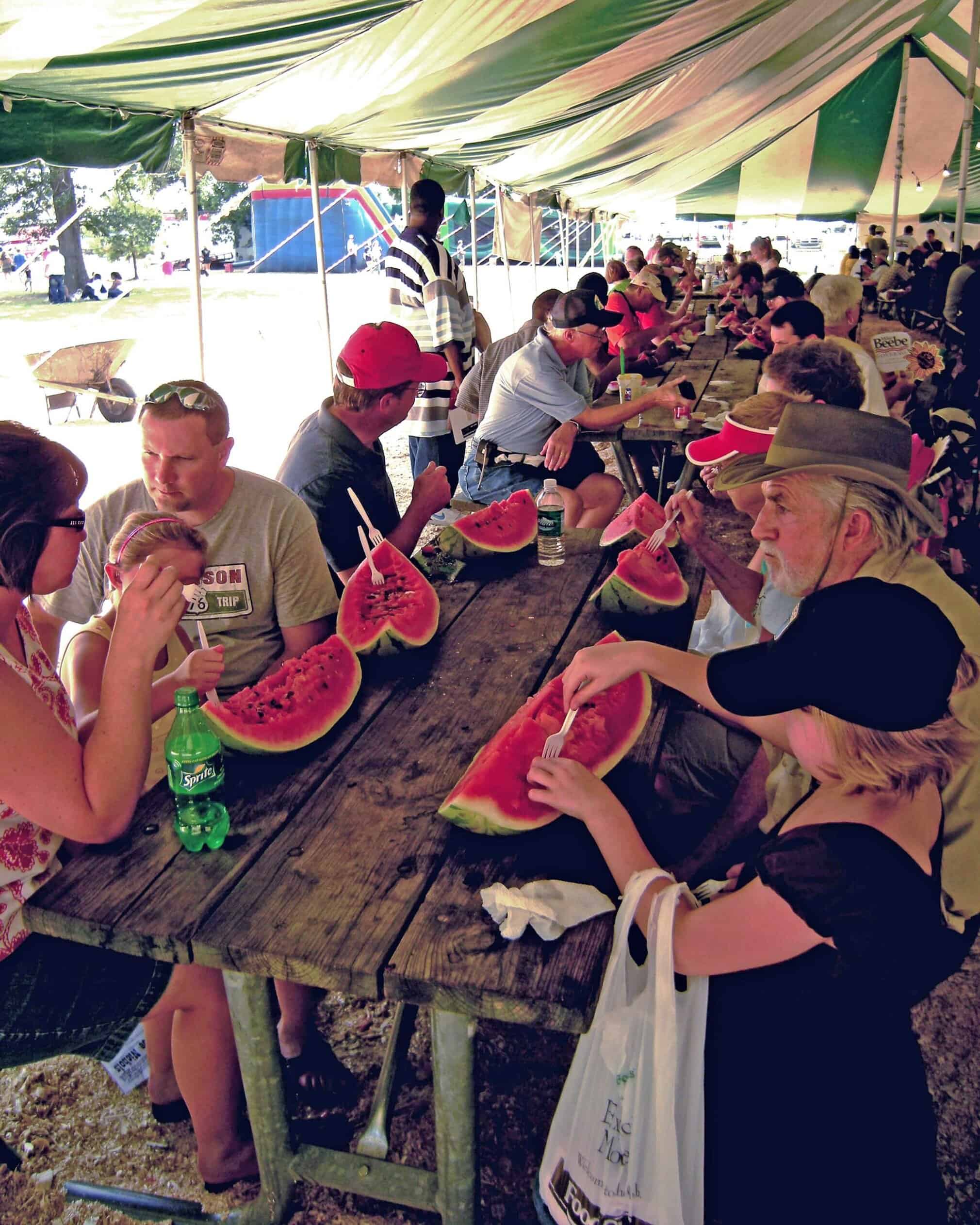
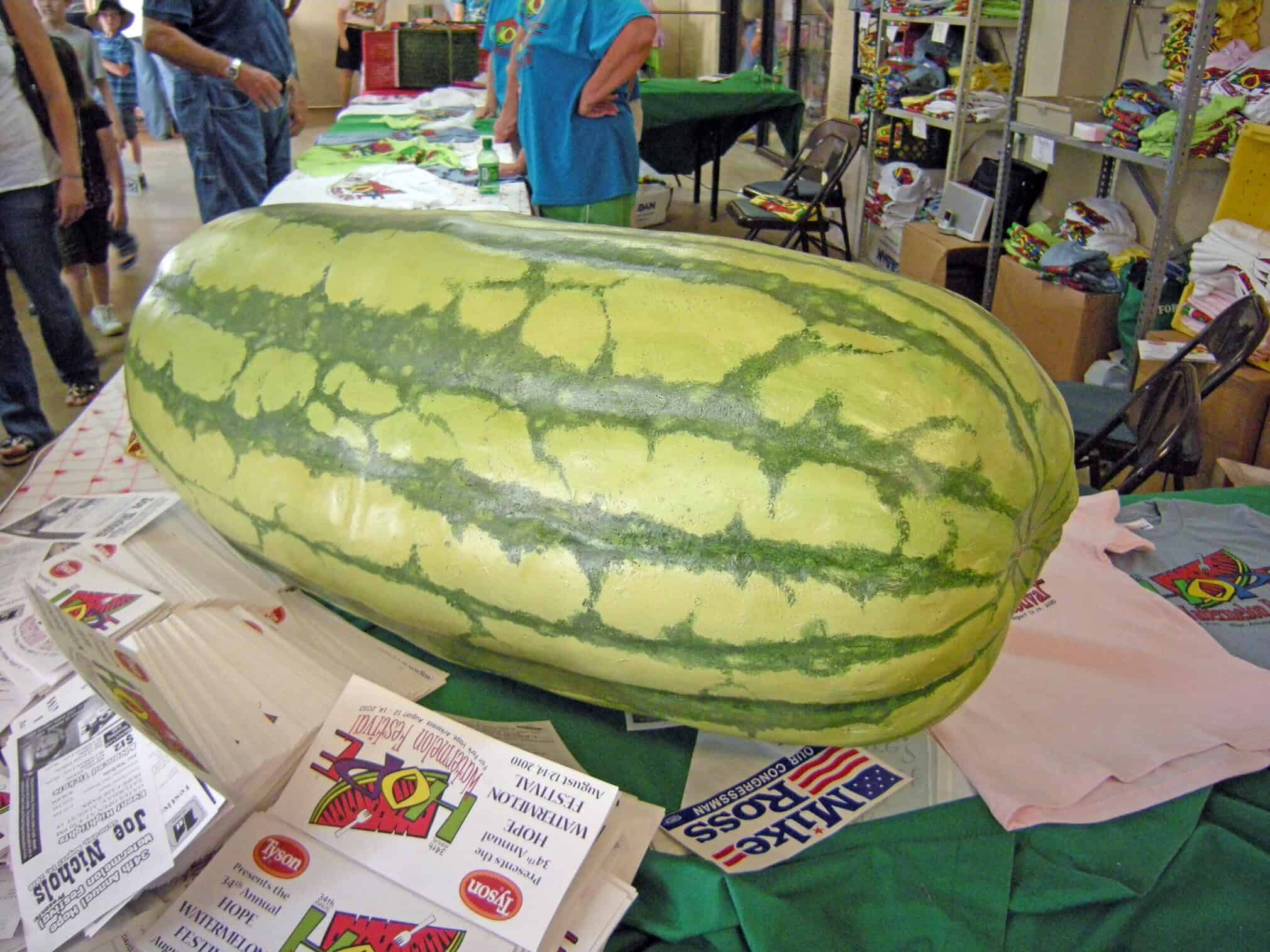
“The first Hope Watermelon Festival was launched in the mid-1920s,” says Christy Burns with the Hope Chamber of Commerce. “It was dormant from 1930 to 1976. It was reorganized in 1977, bringing us to the 49th annual Hope Watermelon Festival in 2025.”
The city has gained national and perhaps international renown from world record-breaking watermelons.
In 1935, a watermelon weighing in at 195 pounds was grown by O.D. Middlebrook. It was later presented to Hollywood legend Dick Powell at his home in California, as a gift from his home state. Jason Bright broke the record in 1986 with one weighing 260 pounds; his dad Lloyd Bright beat that record with a 268.8 pounder in 2006, a record held until 2013, when the title was taken by a behemoth 350-pounder in Tennessee. Both of the Brights’ watermelons were grown on a sandy ridge near Hope, in perfect conditions for growing those large, flavorful melons.
The Hope Watermelon Festival spans the weekend of August 7-9, with activities centered around both the fruit and the community. It’s well known for watermelon-eating and seed-spitting contests, the Watermelon Olympics—including a watermelon toss and tug-of-war—and “Watermelon Idol,” a singing competition.
The festival is free; parking is $5 a car. Watermelon slices are $1.25, chilled, and throughout the festival you’ll find a tent packed with people elbow-to-elbow, enjoying the veritable feast.
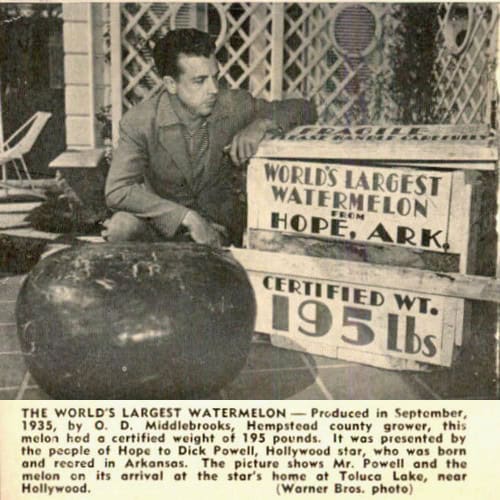
Cave City, Home of the Sweetest
The Cave City Watermelon Festival is a bit younger than that of Hope. It began as a community picnic in 1980, but rolled quickly over a few years into a showcase of area agriculture and an annual homecoming, too. Now in its 45th year, it’s become well established as a signature event for the area.

“The festival is unique in that it’s free to attend,” says Cave City Watermelon Festival Director Amy Finster. “The entertainment is free for everyone to enjoy, there are free activities throughout the weekend. The festival is free thanks to community support. Without [it] there would not be a festival.”
While Hope lays claims to Arkansas’ largest watermelons, Cave City leans into the title of having the state’s sweetest.
“First it was just a slogan we decided to own,” Finster continues. “However, several years ago someone in town bought watermelons from surrounding states and tasted the sugar levels of each watermelon. Cave City watermelons tested 16% higher in sugar content and sweetness than all the rest.”
The festival, which runs Friday, July 24, through Sunday, July 26, this year, charges nothing for attendance or parking and provides musical entertainment alongside contests, such as the watermelon relay and the watermelon toss. There’s a car show, vendors galore, and then at 4 p.m. on Saturday, there’s an epic feast.
Producers, families that have grown watermelons for generations in and around Cave City, open up a refrigerated truck packed with melons from their farms, cut them open with butcher knives and machetes, and share the slices of those melons with lines of hungry folks that sometimes stretch a couple of blocks.
“On average, there are around 400 watermelons sliced and given away during the watermelon feast,” Finster shares. “Each of the growers in town donate what they can.”

Savor the Season with Pickles & Preserves
The flavor of those melons isn’t lost once the season ends. For generations, watermelon pickles and watermelon preserves have been put up to share for the future. Take, for example, this recipe from the August 23, 1929 edition of the Calico Rock Progress, courtesy of the Library of Congress Archives:
WATERMELON PICKLES
4 pounds melon rinds after cooking
4 pounds sugar
1 pint vinegar
2 ounces whole cloves, allspice and stick cinnamon
Put the prepared rind into the boiling water (plenty); cook until tender; drain thoroughly. Put spices in bag, cook with vinegar and sugar one-half hour. Remove spices, add rind, cook 20 minutes. Put up either hot or cold in sterilized jars.
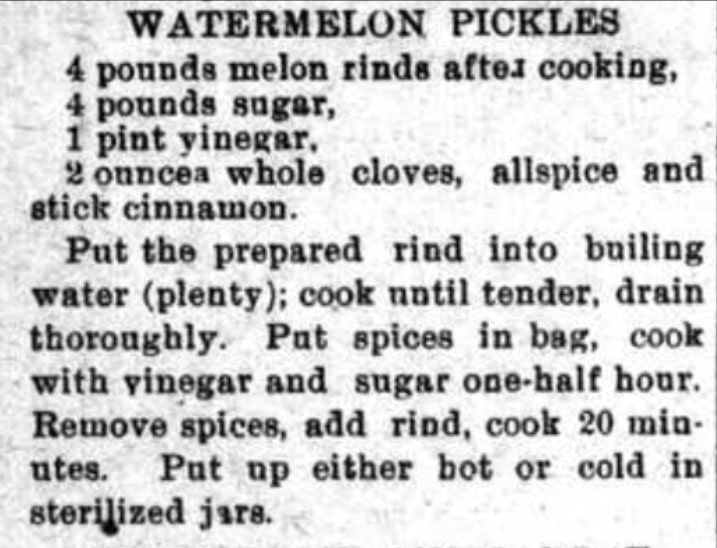
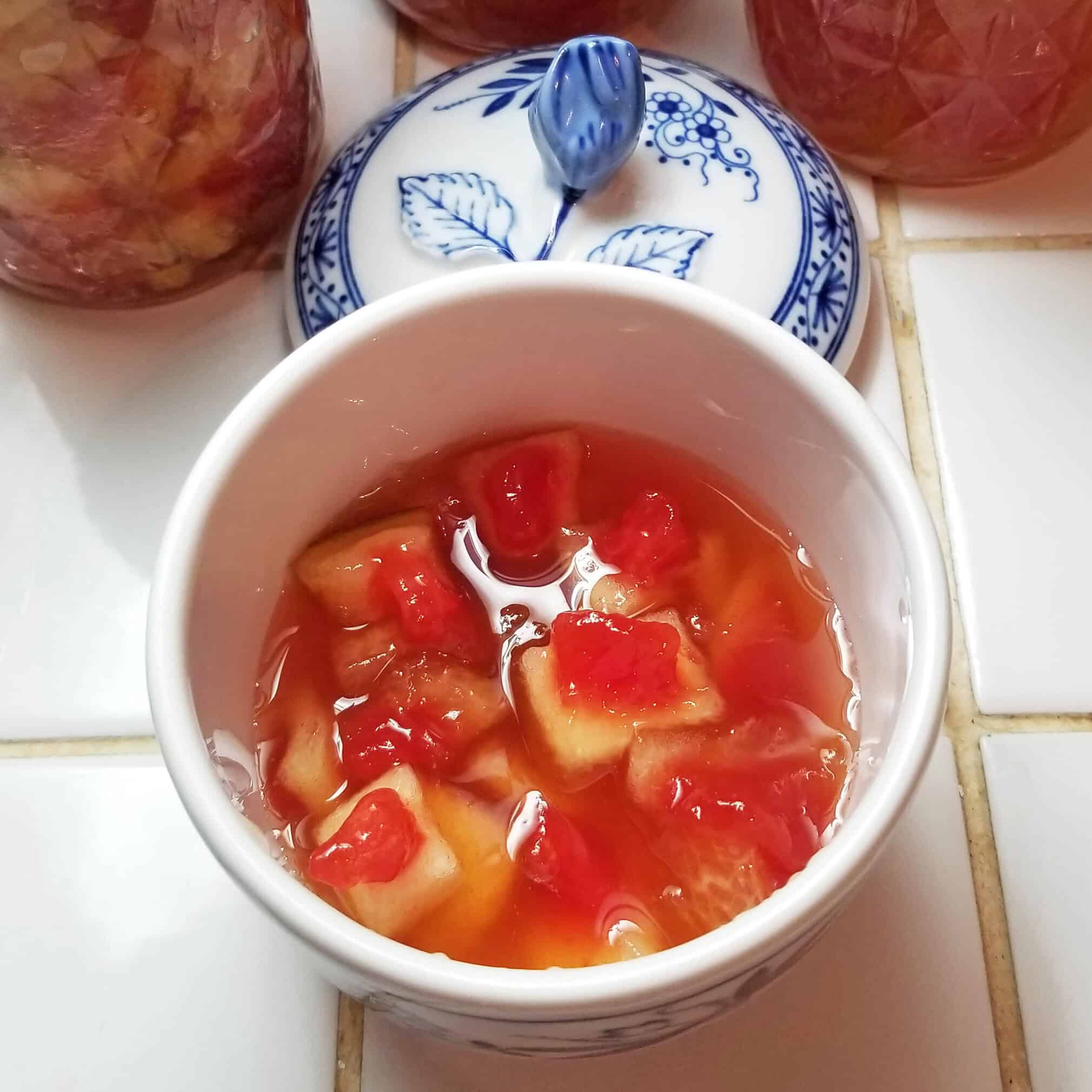
WATERMELON PRESERVES
5 cups watermelon rind
2 ½ cups sugar
1 teaspoon salt
1 lemon
Remove skin of melon (the leathery green part). Leave 1/8 inch red part of fruit if you can. Cut into cubes no larger than 1/2 inch. Place in bowl. Slice lemon into 1/2 inch disks and fold into watermelon rind. Add salt to sugar and then cover the fruit completely. Refrigerate overnight.
Pour contents into pot and bring to medium heat. Let simmer for up to two hours, until the watermelon becomes translucent. Remove lemon. Pack hot into jars and seal by pressure cooker method.
Serve as a garnish for cookies or biscuit, or atop a dollop of cream cheese on crackers. Also works well in mixed beverages.
This recipe is from my 2020 book, A Bite of Arkansas: A Cookbook of Natural State Delights. A spoonful in mint tea or lemonade is refreshing.

More on Melons: Watermelon Crawl 2025
Annual volunteer-driven Watermelon Crawl harvests thousands of pounds of food for the charitable food network each year.
“How can we use this leftover food?” That question sparked an annual summer event and millions of pounds of melons gathered and distributed to food banks through the Arkansas Hunger Relief Alliance. Read the full story HERE.
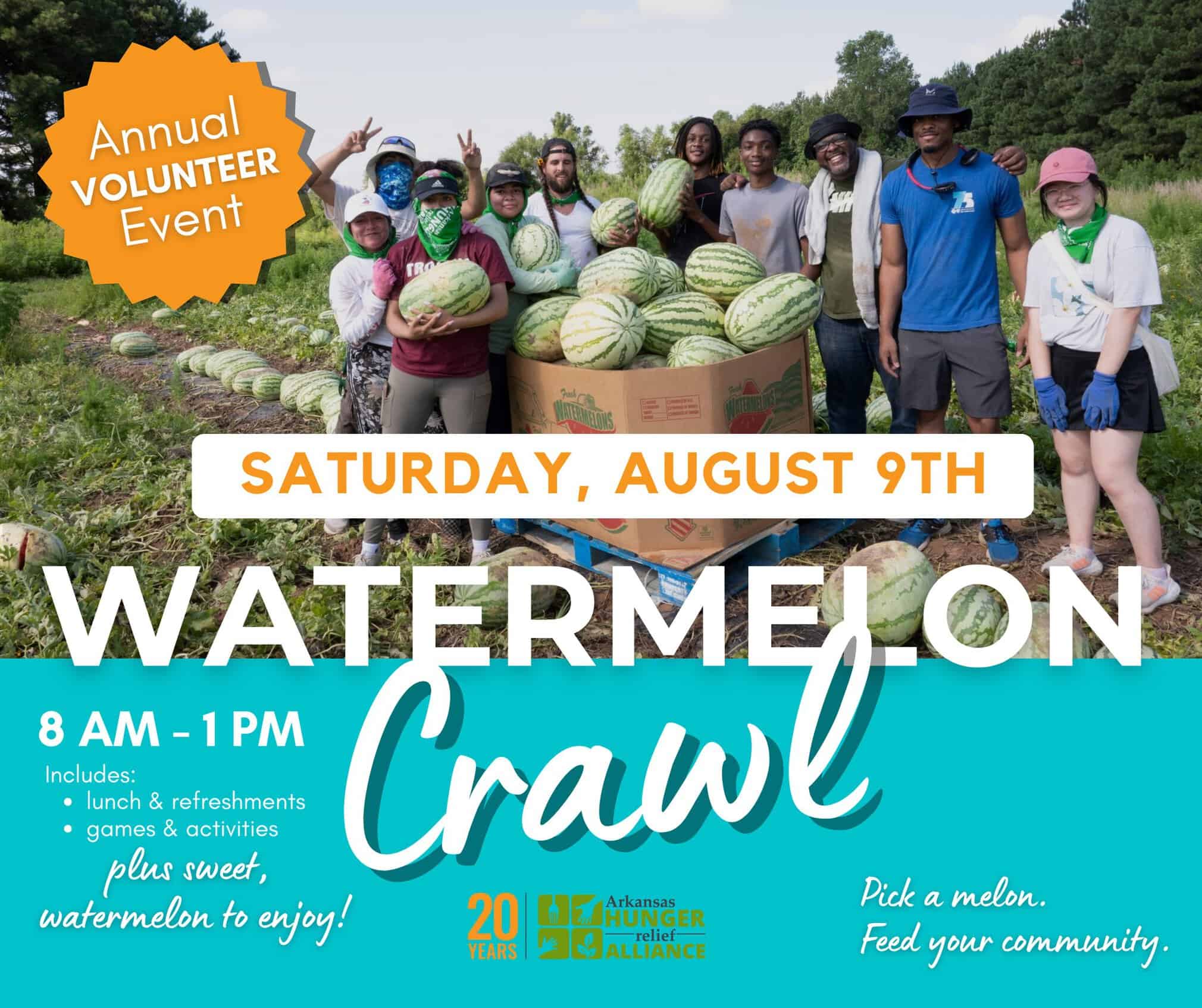

Kat Robinson is Arkansas’ original culinary traveler, with three PBS programs, thousands of articles, and 13 books on food in The Natural State to her credit. The Emmy-nominated documentary host and food historian is currently working on a history of Arkansas barbecue.
Follow Kat: Facebook | Instagram | www.TieDyeTravels.com
